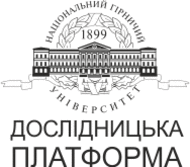№81-12
Study of the relationship between plastic deformation and intermediate structural components in construction steel
O. Rakaev1, І. Soloviov2, V. Filatov2, D. Dovhal2, А. Opanasenko1
1Ukrainian State University of Science and Technologies, Dnipro, Ukraine
2Dnipro University of Technology, Dnipro, Ukraine
Coll.res.pap.nat.min.univ. 2025, 81:123–129
Full text (PDF)
https://doi.org/10.33271/crpnmu/81.123
ABSTRACT
Objective. To investigate the relationship between the structural components of the bainite type in structural steels after heat treatment and to assess the influence of static deformation on the change in the structural state and, as a result, the mechanical properties of materials.
Methodology. To achieve the goal, the following were used: metallographic method of structure analysis (Neophot-2, AXIOVERT-2000); microhardness measurement (PMT3); tensile test (FP 100/1). The study of the influence of external load on plastic deformation of structural components was carried out in accordance with DSTU 1497-94. The samples were subjected to static tension to the state of failure, and also stopped at the points: the beginning and end of the yield point; the middle of the residual deformation region.
Results. Further development of the theoretical patterns of formation of various types of bainitic ferrite structures in low-carbon steels after intense thermal processing in storage due to the development of plastic deformation began to develop. Data from the deformation of bainite colonies in steels 10ХСНД and 10Г2ФБ with the addition of a planarity at the end of the platform showed that the deformation from the edge of the grain changes from 73 to 68 up to ½. 10G2FB at the edge of the cooling becomes 96%, and at ½ 87%. In this case, in the course of the stage of plastic deformation, the morphology of bainitic-type structures and the width of the slats itself changes, which influences the formation of mechanical forces in the complex, which opens up the possibility of microstructure of the material and its complex of powers.
The originality. The theoretical regularities of the formation of different types of bainitic ferrite structures in low-carbon steels after strengthening heat treatment depending on the development of plastic deformation have been further developed. The data obtained from the deformations of bainite colonies in steels 10XSND and 10G2FB under loading at the end of the yield point showed that the deformation from the edge of the sample to ½ the length changes from 73 to 68%; 10G2FB from the edge of the sample is 96%, and at ½ the length 87%. At the same time, depending on the degree of plastic deformation, the morphology of bainite-type structures changes, namely the width of the rails, which affect the formation of mechanical properties in the complex, this opens up the possibility of adjusting the microstructure of the material and its complex of properties.
Practical implementation. Low-carbon microalloyed steels play a large role in modern construction. The use of low-carbon microalloyed steels with a pre-formed bainite-type structure in frame structures allows for the construction of high-rise buildings and multi-span structures.
Keywords: plastic deformation, low-carbon microalloyed steels, bainite.
References
1. Liu, F., Yu, X., Huang, C., He, L., Chen, Y., & Bu, W. (2015). Microstructure and mechanical properties of AerMet 100 ultra-high strength steel joints by laser welding. Journal of Wuhan University of Technology-Mater. Sci. Ed., 30(4), 827–830. https://doi.org/10.1007/s11595-015-1236-0
2. Keehan, E., Zachrisson, J., & Karlsson, L. (2010). Influence of cooling rate on microstructure and properties of high strength steel weld metal. Science and Technology of Welding and Joining, 15(3), 233–238. https://doi.org/10.1179/136217110x12665048207692
3. Svensson, L. (2007). Microstructure and Properties of High Strength Weld Metals. Materials Science Forum, 539–543, 3937–3942. https://www.semanticscholar.org/paper/eb6b76c01ec0d8067a7e429ed77c1d92592e0498
4. Markashova, L. I., Poznyakov, V. D., Shelyagin, V. D., Berdnikova, E. N., Bernatsky, A. V., & Alekseenko, T. A. (2018). Effect of metal structure on service properties of high-strength steel welded joints produced using different methods of welding. The Paton Welding Journal, 2018(2), 7–13. https://doi.org/10.15407/tpwj2018.02.02
5. Feng, X., Wang, B., Gu, N.,& Ma, X. (2005). Effect of moderate temperature deformation on microstructure of link chain steel 23MnNiCrMo54. Journal of iron and steel research, 3, 42–46. http://caod.oriprobe.com/articles/8919493/Effect_of_Moderate_Temperature_Deformation_on_Microstructure
6. Kania, H., & Liberski, P. (2013). The Structure and Growth Kinetics of Zinc Coatings on Link Chains Produced of the 23MnNiCrMo5-2 Steel. Solid State Phenomena, 212, 145–150. https://doi.org/10.4028/www.scientific.net/ssp.212.145
7. Laukhin, D., Ziborov, K., Fedoryachenko, S., & Rott, N. (2024). Influence of Temperature-Strain Parameters of Shelters Reinforcing Materials on Increasing Properties in the Z-Direction. Materials Science Forum, 1126, 111–118. https://doi.org/10.4028/p-j10tbj
8. Kostin, V. A., Laukhin, D. V., & Nyrkova, L. I. (2023). Cracking of the Concrete Matrix Due to the Pressure of Corrosion Products in Reinforced Concrete. Materials Science, 58(6), 774–780. https://doi.org/10.1007/s11003-023-00729-8




